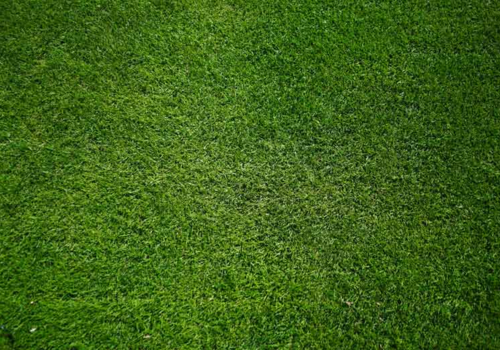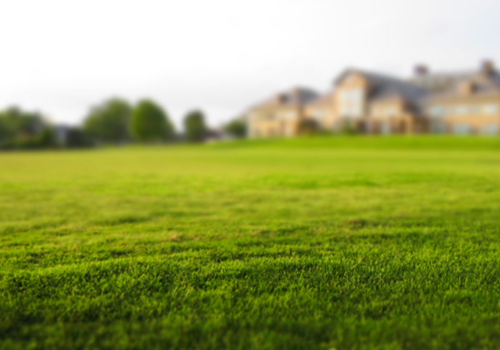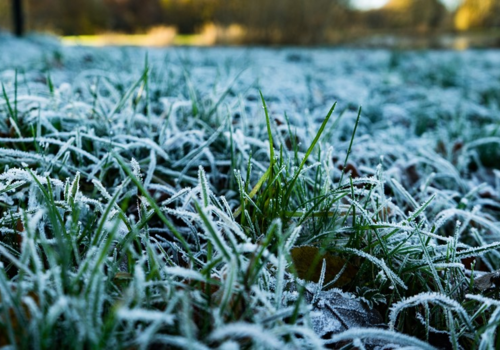
Also known as lawn scarification or dethatching, sacrifying is an essential part of your lawn maintenance routine. Scarifying is most often carried out with the use of a mechanical lawn scarifier or dethatcher. A scarifying machine look similar to a small lawn mower, but its purpose is very different!
What's the difference between a mower and scarifying machine?
While a lawn mower is designed to cut grass, the main purpose of a scarifier is to remove build up of thatch and moss from your lawns surface and actually cut into the soil. Scarification helps encourage healthy growth for your grass seeds.
If you don’t have a scarification tool, you can still scarify your lawn! Here we’ll look at what scarifying is, why it’s important and how you can manually scarify with common gardening tools you probably already have to hand.
Why is scarification important?
Scarification is important as it helps remove organic dead material from surface of your lawn that has built up over months as well as aerate for better air and nutrient circulation.
Organic matter build up, like moss and grass cuttings (thatch), can prevent any grass seed from growing. This is because the moss and thatch can create a "mat", which can stop sunlight getting through and ultimately stops nutrients from being absorbed into the soil for the grass plants to grow.
Without making lawn scarification part of your routine, you’ll likely end up with a patchy lawn rather than a luscious green one!
How often should you scarify your lawn?
An important part of scarifying is knowing when’s the right and wrong time to carry it out! We recommend scarifying your lawn twice a year; once in the spring and once in the autumn when the weather conditions are optimal.
You can find more seasonal lawn care advice in our monthly lawn care diary.
Why You Should Scarify Your Lawn in the Spring
You should scarify in spring time to help prepare your lawn for summer and control the build up of thatch. Early April is generally the best month for scarifying in the spring, as it has optimal conditions for grass seed growth.
Best Conditions for Scarification
You should only scarify when the ground is dry, so if there are a lot of April showers, it’s better to wait until May for a dry day when any surface water has had a chance to drain away or evaporate. As it’s towards the start of spring, it will give your turf plenty of time to recover and grow back even more verdant in the warmer months.
Why You Should Scarify Your Lawn in the Autumn
Lawn scarification in the autumn will help you remove any excess thatch and grass that has built up earlier in the year, and prepare the lawn for the winter.
During the spring and summer months, there are lots of seeds floating around from weeds. After scarifying, it can leave ample space for these weeds to settle in and present new problems!
By September, there are far less of this seed around, but in early autumn there is still enough warmth in the earth so it will still be easy to work with. Because of this, we recommend September for scarifying your lawn ready for any winter grass seed sowing you might plan to do.
It’s important to note that if you find you have too much thatch, dead grass and moss infestations in your turf, you will need to scarify more intensely than you did during the spring. This can thin the appearance of your grass quite dramatically but will create a healthier lawn the following year - making follow up lawn care much easier.
How do I prepare my lawn for scarifying?
To make sure you scarify your lawn in the most effective way possible, it’s important to properly prepare it!
Only scarify when the soil is fully dry to make sure you don’t cause unnecessary damage. This is because if the soil is wet your tools won't function properly, it can cause clumping and accidentally tear out grass or create holes - meaning your lawn recovers more slowly.
We also recommend mowing your lawn to the lowest setting on your mower and removing all the thatch straight after. The shorter your grass is, the easier it will be to access the soil itself. This will make it much easier to scarify manually.
How to Scarify a Lawn by Hand
If you don’t have a scarifier, you can use a rake for scarification. There are actually many benefits to manually scarifying. It’s much gentler on your lawn - which makes recovery much quicker for grass plants.
Scarifying a Lawn in the Spring
In the first step, use your rake to go up and down your lawn in rows. As you go, gently remove moss and thatch. You shouldn’t need to use a lot of force in your first pass. When you have covered your whole lawn area, gather up all of the debris that you’ve pulled up.
You can use a rake or a garden vacuum to do this and place any debris in a wheelbarrow to dispose of later, or directly in the green bin!
Now that you have removed the top layer of thatch, you can use a little more pressure with your rake and push it a few millimetres deep into the soil. We’d recommend switching directions, and instead pull your rake diagonally across the lawn. By switching directions, you can catch any debris that may have been flattened. When you have finished pulling the rake along the lawn, simply clean up any debris.
Scarifying a Lawn in the Autumn
In the autumn, there tends to be a bigger build up of thatch and moss so you may find you need to carry out three or four passes across your lawn.
You can use the same method for manual scarification as you do in the spring, just make as many passes as necessary. You’ll know you're finished when there is no thatch to pull up.
Should you aerate after scarifying your lawn?
If you plan to overseed your lawn or add fertiliser after scarifying, it’s definitely a good opportunity to aerate your lawn. Scarifying your lawn will remove the build up of dead thatch and moss, but it won’t fully aerate the soil. Aerating pierces the earth to make it easier for water and air to penetrate deep into the grass roots, and lets stale carbon dioxide escape - which is perfect for seeding.
You should give your soil at least a few days to rest and recover before carrying out any aeration. We recommend aerating annually and autumn is generally the best time to do it. This is because there is more moisture but there is still some warmth. If you aerate during warmer weather, when there isn’t much rain, it can actually make it difficult for plants to hold onto water and can cause soil to dry out.
What is the difference between raking and scarifying a lawn?
While you can use a rake for scarification, raking and scarifying a lawn are very different. A rake will remove thatch and moss from your lawn's surface and is an easy way to clean up your lawn. However, when you scarify, you actually penetrate and pull up thatch and moss that is more deeply rooted into your lawn. Scarifying won’t fully aerate your lawn but it will help with aeration, unlike raking.
Lawn Seed from Boston Seed
Once you have prepped and scarified your lawn, it is important to choose the right grass seed for you lawn, for example, if you have a shaded garden, then it crucial to choose a lawn seed that thrives in the shade or is you have children or dog, then choosing a hard wearing lawn seed is important. If your current lawn just needs a bit of care, then our lawn repair grass seed can get your lawn back to looking it's best.
-----------
Keen to learn more about seasonal lawn care or have some unanswered questions about lawn scarification? Get in touch with our friendly team who'll be happy to help.
How we can help!
At Boston Seeds we take pride in excellent customer service. If you're growing a lawn from scratch but unsure how much grass seed you need, our handy Grass Seed Calculator can help you figure it out in just a few clicks!
With Next Day Delivery on hundreds of items too, choosing from our extensive range of lawn seed couldn't be easier. Ordering regularly or looking for large volumes? Click here to apply for a trade account today - we review all applications within one working day.


